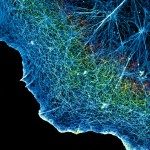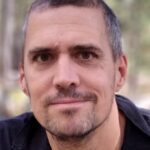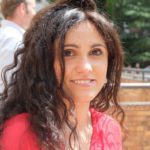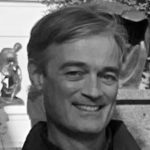Link to Pubmed [PMID] – 33270250
Link to DOI – 10.15252/embj.2020105247
EMBO J 2021 Jan; 40(1): e105247
In order to replicate, human immunodeficiency virus (HIV-1) reverse-transcribes its RNA genome into DNA, which subsequently integrates into host cell chromosomes. These two key events of the viral life cycle are commonly viewed as separate not only in time, but also in cellular space, since reverse transcription (RT) is thought to be completed in the cytoplasm before nuclear import and integration. However, the spatiotemporal organization of the early viral replication cycle in macrophages, the natural non-dividing target cells that constitute reservoirs of HIV-1 and an obstacle to curing AIDS, remains unclear. Here, we demonstrate that infected macrophages display large nuclear foci of viral DNA (vDNA) and viral RNA, in which multiple viral genomes cluster together. These clusters form in the absence of chromosomal integration, sequester the paraspeckle protein CPSF6, and localize to nuclear speckles. Surprisingly, these viral RNA clusters consist mostly of genomic, incoming RNA, both in cells where reverse transcription is pharmacologically suppressed and in untreated cells. We demonstrate that following temporary inhibition, reverse transcription can resume in the nucleus and lead to vDNA accumulation in these clusters. We further show that nuclear reverse transcription can result in transcription-competent viral DNA. These findings change our understanding of the early HIV-1 replication cycle and may have implications for addressing HIV-1 persistence.





